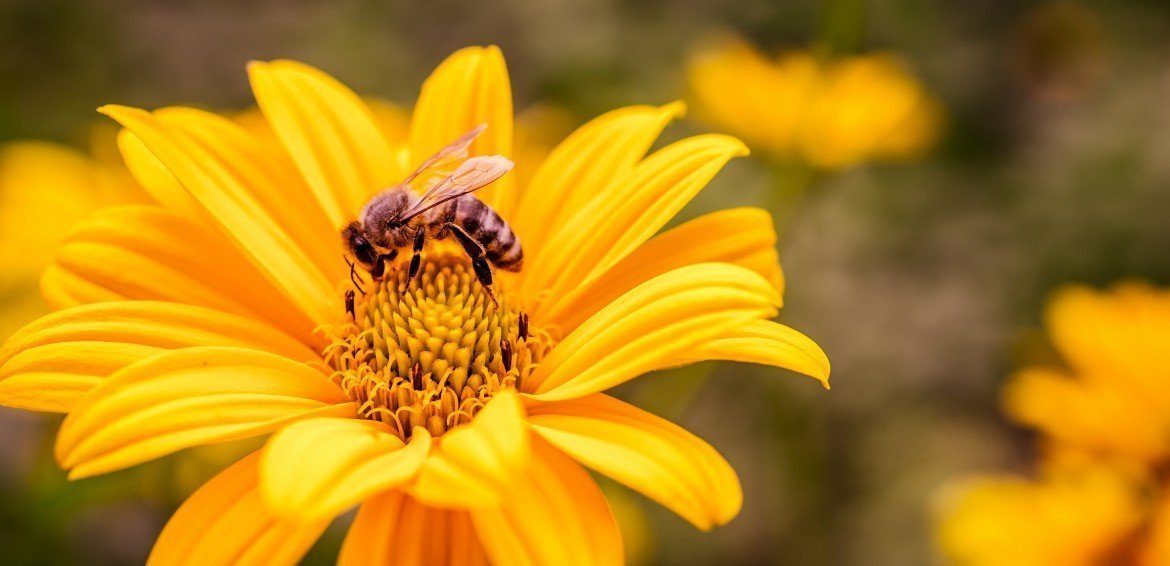blogs
Curiosities
Apicultural flora: what it is, importance and main aspects of the Northeast
12/08/2020
Do you know what bee flora is and its importance for products from bees? To give you an idea, the native flora of a place can be responsible for the taste, aroma and a series of other properties of beekeeping inputs.
Therefore, understanding the subject can give you a better idea of which product to choose. So, if you want to know more about bee flora, keep reading this text.
What is bee flora?
The apicultural flora is what can be called the “pasture” of the bees. That's because it is the set of flowers in a biome that provides nectar and pollen for bees to feed both themselves and the colony.
It is also in the bee flora that bees also collect resins from plants that later become propolis. As the bee floras are different from each other, it is necessary to know how to identify good places for cultivation so that the quantity and quality of inputs are greater.
What changes from one apicultural flora to another?
Bee floras are different from each other, as we have already said. What determines this is, in addition to the natural conditions, the knowledge of the producers about the plants of the region. They need to understand the relationship between flora and colonies to understand and identify when and how products will be produced.
What are the bee floras of the Northeast?
The Northeast is a region where beekeeping is strongly encouraged. With apiaries in different types of bee flora and biomes in the region, it can be considered a cradle of inputs with distinct flavors, aromas and properties. This makes beekeeping with products from the Northeast unique.
Result of biodiversity, a region as heterogeneous as it is graced with flora and extreme conditions for production without chemicals. To find out which are the main species of the beekeeping flora of the Northeast, check out the list below:
Jitirana
It is a creeping or climbing species, which occurs in the North, Northeast, Midwest and Southeast regions, common in pasture areas, open fields and fences. It is sometimes considered an invasive plant in agricultural areas. It has large, lilac-colored flowers and is a great supplier of nectar and pollen.
Bamburral
Subshrub and aromatic plant, which can be found from Mexico to southern Brazil, Also considered invasive of agricultural areas, it is very frequent in pastures. Quite visited by Apis mellifera and native bees, both social and solitary, it is considered a very important species of the Northeastern bee flora.
Marmeleiro
A species that blooms at the beginning of the rainy season, the quince tree is a plant of great importance. After all, she is one of the main suppliers of nectar for bees, especially in the Caatinga. The honey from its flowers has a highly appreciated color, flavor and aroma, which makes it highly appreciated and commercialized.
Angico-de-bezerro
Medium-sized tree that occurs especially in regions of the Caatinga. It is heavily visited by bees during the months of December and April, when the species blooms. Considered one of the main species in the Northeast, it is responsible for much of the production of an important species in the beekeeping flora of the Northeast, as it contributes significantly to the formation of honey in the region.
Mofumbo
The mofumbo is a small tree that occurs in the Caatinga, Cerrado, Atlantic Forest and Amazon biomes. It blooms mainly during the rainy season, and its yellow flowers attract a lot of attention from bees.
Sabiá
Native to the Northeast, Sabiá is a fast-growing tree. Its flowering also occurs during the rainy season. It is considered an excellent beekeeping plant because it provides a large amount of nectar and pollen.
Now that you know what bee flora is, its importance for the production of beekeeping inputs and the main ones in the Northeast, continue browsing our blog to learn more about technology focused on beekeeping processes.






